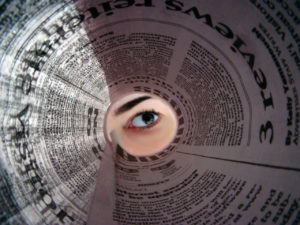How to Get Media Coverage for Your Lake Event
Are you planning a local lake event? Have you successfully petitioned your state’s Governor to sign a Lakes Appreciation Month proclamation? Are you looking to get the good word of lake management out in general? Here are a few ideas that may help steps:
Develop your contact list
Get in touch with your local media outlets and identify contacts and their phone numbers and email addresses. Local media include daily and weekly newspapers, cable television stations, local TV and radio stations, and college media stations. To get the right contact, ask who would be the most appropriate person to cover your event. Ask how far ahead of the event you should send the news release and how they prefer you to send the release (i.e., via email, mail, or drop off).
Write a news release: (2–4 weeks before your event)
Generally the media will be more interested in covering your event if the story is of interest to many people (i.e., “How clean is our lake?”), there is conflict (i.e., “Development pressures in our watershed are affecting our lake”), there is a human-interest angle (i.e., “The 4th grade class of the elementary school will be on hand to pick up trash along the shoreline”), and if local community leaders or celebrities will attend (i.e., “The mayor has been invited to measure lake transparency”).
Tips for writing a good news release
- The words “FOR IMMEDIATE RELEASE” should appear at the top left of the page in upper case. If you would rather release the story at a later date, write “HOLD FOR RELEASE UNTIL” followed by the desired release date instead.
- Follow this with a good headline. Remember you are competing with lots of other news releases. Be sure your headline describes the content and includes key points of the story (i.e., “Local volunteers to sample health of Lake Wanna-be-clean on July 3”).
- Next, and before you begin the body or text of your story, make sure to list “City, State/Country – Month Day, Year -“ in italics.
- Follow this with the body or text of your story. The information should answer the five W’s…Who? What? When? Where? Why? The body should consist of more than one paragraph with each paragraph made up of no more than a few sentences. Add basic information about your event or program, your lake and/or watershed, and your event. Consider including some facts about lake water quality nationwide and make sure to include the names of any local celebrities or elected officials expected to attend your event.
- Follow the body of your story with a brief paragraph about your organization or the organization that is featured in the story.
- Follow this with your contact information. Include your name, company name, phone, fax, email, and postal address.
- Try to limit your news release to one page if possible and make sure to type “###” at the bottom center of the last page (this means “the end” in media talk). In the case that you have written more than one page make sure to write “-more-” at the bottom of any preceding pages.
- Finally, local papers will often print news releases verbatim, so make sure your news release is written as a news story. Tip: scan your release alongside a similar story from the media source you’re approaching. See how well your release matches up and make adjustments if needed.
Invite the media: (1-2 weeks before your event)
Fax, email, mail, or deliver your news release to all of your media contacts along with an invitation to attend your event. Make sure to follow the guidelines that your contacts gave you when you developed your contact list. In general, send your news release 4 to 5 days before your event and note that weekly newspapers may need more time.
Follow up: (1-2 days after sending your news release)
Follow up with a phone call to make sure your contacts have received your news release. If not, be prepared to give them any details.
Prepare a media kit: (2-3 days before your event)
Prepare a media kit that reporters can take with them to write the story. Your kit should include:
- Background information on your event. (1 page maximum)
- Any information on water quality issues related to the water body they will be covering. (1 page maximum)
- Contact names that the media can use to call and obtain quotes or more information.
Be prepared to provide “on-the-spot” interviews: (During your event)
Designate several key people from your event or organization to be interviewed. They should be knowledgeable and be able to provide details about the event. And make sure to identify possible photo or video opportunities.
What if the media doesn’t show up?
Even if the media are planning to attend your event, sometimes there are breaking stories that they are forced to cover instead. Be prepared! Make sure you have a friend or volunteer who can take quality pictures at the event. After your event, write up a second news release that describes the event and includes the components discussed in the “News Release” section above (local angle, interest to many people, etc.). Send the news release to your media contacts along with some good photos and names and phone numbers of people who can be interviewed over the phone. Be sure to provide a caption with the photos including the names of the people in the photos. Follow up with a phone call to make sure your contact received the information and ask if they have any questions.
Remember your thank you notes! (The day after the coverage)
If the media does cover your event, be sure to follow up and tell your contacts that you thought they did a great job covering the story. Everyone likes to be thanked and this will help you establish a relationship with the media for your future efforts.

